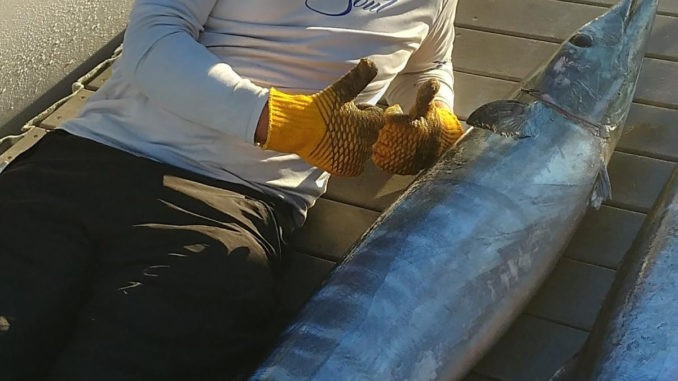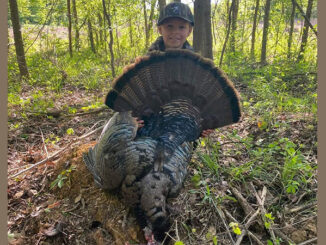
Winyah Scarp, Georgetown Hole should hold plenty of ‘hoos throughout March
Spring will finally arrive this month, and it will be a great time to plan a bluewater trip for wahoo, a top-of-the-food-chain opponent and a premiere target for offshore anglers.
Even though the warm, Gulf Stream current rarely runs cooler than 70 degrees, more baitfish arrive in spring, making wahoo lick their chops. Anglers can expect a tripleheader of dolphin, wahoo and tuna this time of year, but the big, toothy wahoo are still take the top prize.
Luckily for offshore anglers, heading to a likely spot two hours away from the sight of land can be productive from any port off the South Carolina coast. But the Winyah Scarp is a monster-sized wahoo magnet and is best accessed from the ports along South Carolina’s northern coastline, where Jay Sconyers of Ace’s Up Fishing Charters calls home.
Sconyers will fish a variety of places offshore for wahoo, but the Winyah Scarp and the Georgetown Hole are his favorites because of the consistent water temperature and the abundant bottom structure.
“They can be in places as shallow as 120 feet, but we catch them regularly in 600- to 800-foot water, and the break is the best where the structure is located,” said Sconyers (843-997-3270). “The Scarp and the Georgetown Hole are full of structure and hold more wahoo.”
Anglers can catch wahoo a variety of different ways, but the most-common method is pulling cedar plugs or rigged ballyhoo at relatively slow speeds. When using this method, a wide selection of fish will show up on the end of the line, from dolphin and tuna to king mackerel, bonito and the occasional billfish.
But when Sconyers is after jumbo wahoo, he will utilize a completely different, but solid, tactic.
“High-speed trolling is the best way to catch a big wahoo — and usually several of them,” said Sconyers, who will run three rods rigged with 20-, 48-, and 64-ounce trolling weights and a skirted, rocket-head style lure trailing behind. Trolling at 14 knots, he is able to cover twice the amount of water compared to the typical, slower trolling methods. If the wahoo are concentrated on one end of the Scarp, Sconyers’ high-speed trolling method will get him to the fish fast.
“We can cover more ground and find the fish faster this way. I can troll up and down the 10 miles of Scarp twice as fast as we normally would,” he said.
While some wahoo are considered solitary, wahoo will congregate in small groups when food is concentrated in a particular area. Sconyers will turn and troll back through a particular area along the Scarp after he boats a fish or two.
In addition to covering water, high-speed trolling eliminates many of the other species that typically hit his baits.
“When a rod goes off, it’s going to be a wahoo 99 percent of the time. Out of the hundreds of wahoo we have caught this way, we have hung one king mackerel and one marlin. High-speed trolling takes all of the other fish, like kings and barracudas, out of the game,” he said.
Filled with a mouthful of razor-sharp teeth and built for pure speed and force, wahoo carry a big stick that qualifies anglers to take their techniques to the next level. And high speed trolling is the surefire way to fill the box during the spring season at the Winyah Scarp.



Be the first to comment